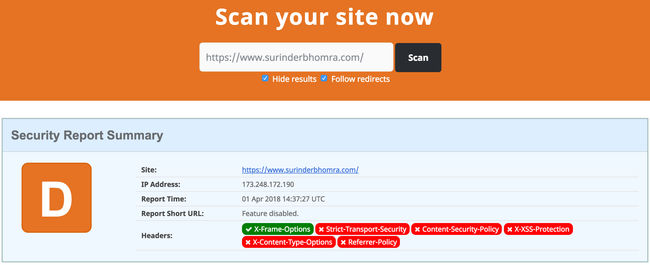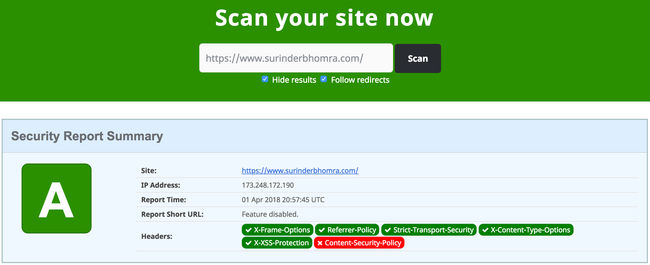A website can tell the public a lot about you, from the things you want people to see and other things you probably would not. HTTP Headers can divulge things about your website that you wouldn't necessarily want to make public and its up to the individual to make a decision on what headers they're willing to expose. But what I would recommend is to at least analyse any site prior to moving to a production environment.
Why all of a sudden am I talking about questioning your website HTTP Headers?
It was only by chance when perusing StackOverflow I came across a question about securing HTTP headers, I was directed to a site called securityheaders.io. I immediately entered this very site for scanning, thinking it would fare quite well. But boy oh boy was I wrong!:

Based on this result, does this make my website vulnerable? To a certain extent yes. By default you're exposing some key information to potential hackers about how your website is built. For example, here is a simple list of HTTP Headers that could be returned from the server:
- Web server
- Framework version
- Cache handling
- Cross-site scripting access
- Referrer policies
Now based on that list alone, what HTTP headers would you hide? From having my eyes opened by the report generated by securityheaders.io, as a minimum I would hide anything that shows what technology, framework and server platform I am using. If there happens to be an exploit on the very server or technology you are using, we don't want the whole world to know that especially if you happen to be hosting a high traffic website.
I decided to correct all the issues highlighted by securityheaders.io and spent additional time obfuscating some additional headers. Now I can proudly say I've passed. There is just one blemish against the report to do with the "Content-Security-Policy" header, which defines approved sources of content that the browser may load.

I been tweaking around with the rules for this header and I'll be honest when I say it shafted the administration dashboard of my the content management system I use for my site - Kentico CMS. So before I reinstate the header, I need a little more time tweaking.
Another great site to use to analyse the security of your site (.NET sites only) is ASafaWeb, which scans for common configuration vulnerabilities.
Recommended Links







